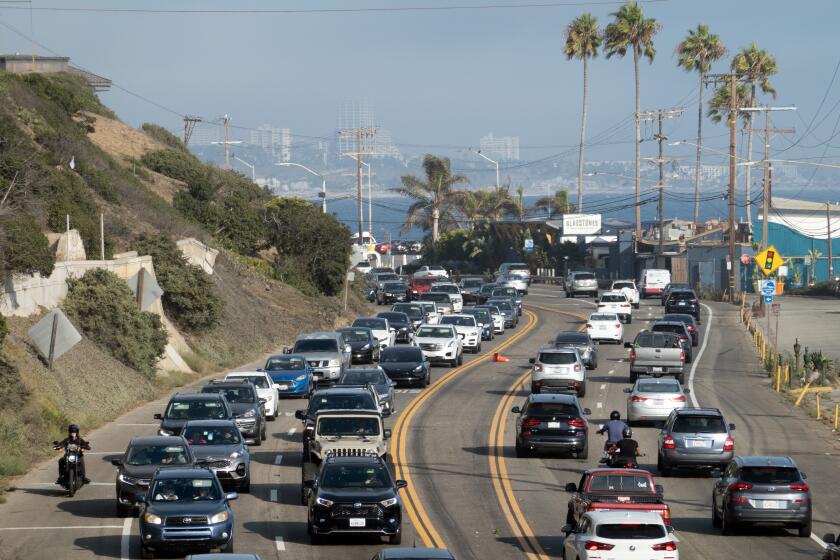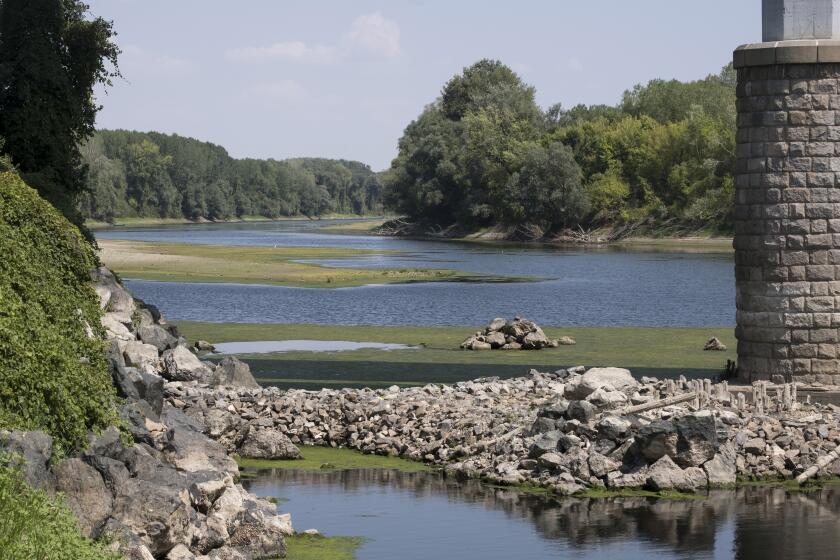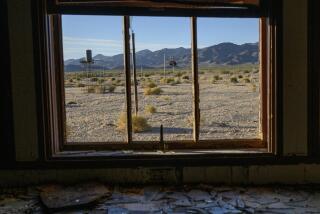Four major climate tipping points are close to triggering, study says

- Share via
Even if the world somehow manages to limit future warming to the strictest international temperature goal, four Earth-changing climate “tipping points” are still likely to be triggered — with a lot more looming — as the planet continues to heat, a new study said.
An international team of scientists looked at 16 climate tipping points — when a warming side effect is irreversible, self-perpetuating and major — and calculated rough temperature thresholds at which they are triggered. None are considered likely at current temperatures, though a few are possible. But with only a few more tenths of a degree of warming from the current level, at 2.7 degrees Fahrenheit warming since preindustrial times, four move into the likely range, according to a study in Thursday’s journal Science.
The study said slow but irreversible collapse of the Greenland and West Antarctic ice sheets, more immediate loss of tropical coral reefs around the globe, and thawing of high northern permafrost that releases massive amounts of greenhouse gases trapped in now-frozen land are four significant tipping points that could be triggered at 1.5 degrees Celsius of warming, which is three-tenths of a degree (half a degree Fahrenheit) warmer than now. Current policies put Earth on a trajectory for about 4.9 degrees Fahrenheit of warming since preindustrial times, according to some projections.
“Let’s hope we’re not right,” said study co-author Tim Lenton, an Earth systems scientist at the University of Exeter in the United Kingdom.
“There’s a distinct chance some of these tipping points are going to be unavoidable. And therefore it’s really important we do some more thinking about how we’re going to adapt to the consequences,” he said.
Timing is a key issue for tipping points in two ways: when they become triggered and when they cause harm. And in many cases, such as ice sheet collapses, they could be triggered soon but their effects, though inevitable, take centuries to play out, scientists said. A few, such as the loss of coral reefs, cause more harm in only a decade or two.
“It’s a future generation issue,” said study lead author David Armstrong McKay, a University of Exeter Earth systems scientist. “Ice sheets collapsing is kind of that thousand-year timescale, but it’s still bequeathing an entirely different planet to our descendants.”
The state will need to make good on a number of other promises to achieve its climate goals. Here’s how California is faring toward those goals.
The concept of climate tipping points has been around for more than a decade, but this study goes further by looking at temperature thresholds for when they may be triggered and what effects they would have. In the last 15 or so years, “the risk levels just keep going up,” Lenton said.
Lenton likes to think of tipping points like someone leaning back on a folding chair.
“When you start tipping over backwards you have in that case a very simple kind of feedback on the forces of gravity operating on propelling you backwards until splat,” Lenton said.
Study co-author Johan Rockstrom, director of the Potsdam Institute for Climate Impact Research in Germany, likened it to someone lighting a fuse on a bomb “and then the fuse will burn up until the big bang, and the big bang may be further down the line.”
Europe is facing one of its worst droughts ever, as rivers dry up, farms go fallow and vineyards roast.
While sea rise caused by ice sheet collapses can reshape coastlines over centuries, Rockstrom said the loss of coral reefs is his biggest concern because of the “immediate impacts on human livelihoods.” Hundreds of millions of people, especially poorer tropical area residents, depend on fisheries linked to the coral reefs, McKay said.
With just a few more tenths of a degree, new tipping points become more possible, including a slowdown of northern polar ocean circulation that can ripple into dramatic weather changes especially in Europe, loss of Arctic sea ice, glacier collapses worldwide and utter failure of the Amazon rainforest.
Some of these tipping points, like the permafrost thaw, accelerate existing warming, but don’t think “it’s game over” if temperatures hit 1.5 degrees Celsius of warming, which is likely, McKay said.
“Even if we do hit some of those tipping points, it will still lock in really substantial impacts we want to avoid, but it doesn’t trigger some sort of runaway climate change process,” McKay said. “That’s not the case at 1.5 degrees. And that means that how much further warming occurs beyond 1.5 is still mostly within our power to affect.”
Prolific author and expert on the history of energy Vaclav Smil on why the transition from oil and gas will be tougher than most people think.
These are tipping points for individual regional disasters, not the planet as a whole, so it’s bad, but not world-ending, said climate scientist Zeke Hausfather of Berkeley Earth, who wasn’t part of the study. He said it was important research that quantified tipping points better than before.
“Have we really contemplated what happens when you mess with our global and ecological systems to that degree?” said University of Miami climate risk scientist Katharine Mach, who wasn’t part of the study. She said it shows troubling ripple effects. “This is a profound reason for concern in a changing climate.”
More to Read
Sign up for Essential California
The most important California stories and recommendations in your inbox every morning.
You may occasionally receive promotional content from the Los Angeles Times.















